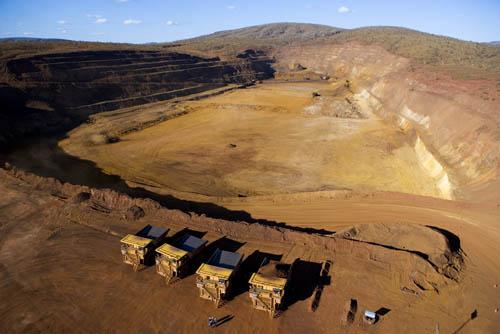
Rio Tinto iron ore mine operations in the Pilbara
<small>Copyright © 2009 Rio Tinto</small>
As CIO of Rio Tinto’s Iron Ore group, Rohan Davidson plays a critical role in overseeing the IT requirements of the operations the mining company owns and manages across North America and Australia.
In Western Australia’s Pilbarra region alone, for example, Rio Tinto operates a network of 14 mines, three shipping terminals and the largest privately owned heavy freight railway in Australia, which spans 1400 kilometres.
Rio Tinto’s Pilbara iron ore operations currently have an annual capacity of 225 million tonnes but, with plans to increase capacity to 283 million tonnes by 2013 all the way up to 333 million tonnes by 2015, Davidson has his work cut out for him to stay ahead of the company’s rapidly expanding operations. In this interview, he talks to CIO about the day-to-day challenges he faces as a CIO in Australia’s booming resources sector.
How do define your chief responsibilities as CIO?
I am the CIO for the Iron Ore product group of Rio Tinto, a global diversified resources company. I have accountability for the IT strategy of the Iron Ore division, and operational accountability for 13,000 users in our Western Australia business. Beyond the Pilbara, we have smaller operations in Guinea and Canada, for which IT managers, reporting to local leadership, manage their operations. As CIO, I seek to keep the core aspects of operational IT on a solid foundation, support the business strategy, and find the balance between centralised operations and local control. My role also has a strong compliance aspect.
What are your top priorities and projects?
I have the great fortune to hold my role through a period of unprecedented expansion of our industry. Our expansion in the Pilbara will see us lift production tonnages by 50 per cent to 333 million tonnes by early 2015. This will have us moving into many new mines, and will be supported by a consolidation of operational control and an extension of automation initiatives. Our growth is heavily dependent on a deployment of a standardised communications infrastructure, and a consolidation and upgrade of a legacy technical application layer that manages our tonnes, time and quality information.
What have been your recent successes and innovations?
In 2009, we commissioned an Operations Centre in Perth, consolidating control of our mine, port, rail and utilities infrastructure into a single room, the first of its kind in the mining industry. The commission of our Operations Centre required a significant uplift in the resiliency and redundancy of our communications network, which was a complex endeavour given the remoteness of the Pilbara operations. Now that we have the Operations Centre in a steady state, the next level of maturity for our business will be to leverage the benefit of having so many operational roles in one location to make better decisions on sequencing, de-bottlenecking and incident response.
Technology provides a great opportunity to remove people from hazardous environments
How does a resource CIO such as yourself define business success? What indicators do you use to measure success?
I see the role as ensuring sound operational performance, supporting the business strategy of safe growth, and providing counsel to the business on the opportunities presented by technology to improve business performance.
Operational performance is easy to measure, with readily available KPIs [key performance indicators] of operational cost, project delivery performance, service performance and system availability. I am also acutely focussed on real business impacts of IT issues. In our increasingly connected business, IT faults do result in production stoppages.
Supporting our strategy requires my team to identify the key dependencies and ensure we do not find our work on the critical path of our expansion
Sitting across such a diverse business provides the opportunity to identify patterns in stakeholder requirements and match them with available and emerging technologies. We have recently commissioned a Pilbara-wide satellite communication system that will enable a site to communicate throughout a Category 5 cyclone. There is a peripheral benefit of providing backup communications between our Operations Centre in Perth and our sites in the event of a fibre cut, and for provision of corporate network connectivity for our in-field exploration teams. We’re currently studying a LTE/4G network as an opportunity to bring the diverse voice and data requirements of mine, rail and port into a single infrastructure. These are projects that would not be progressed in isolation.
Read Part 2 - challenges, decentralised IT and a remote workforce
Join the CIO Australia group on LinkedIn. The group is open to CIOs, IT Directors, COOs, CTOs and senior IT managers.
